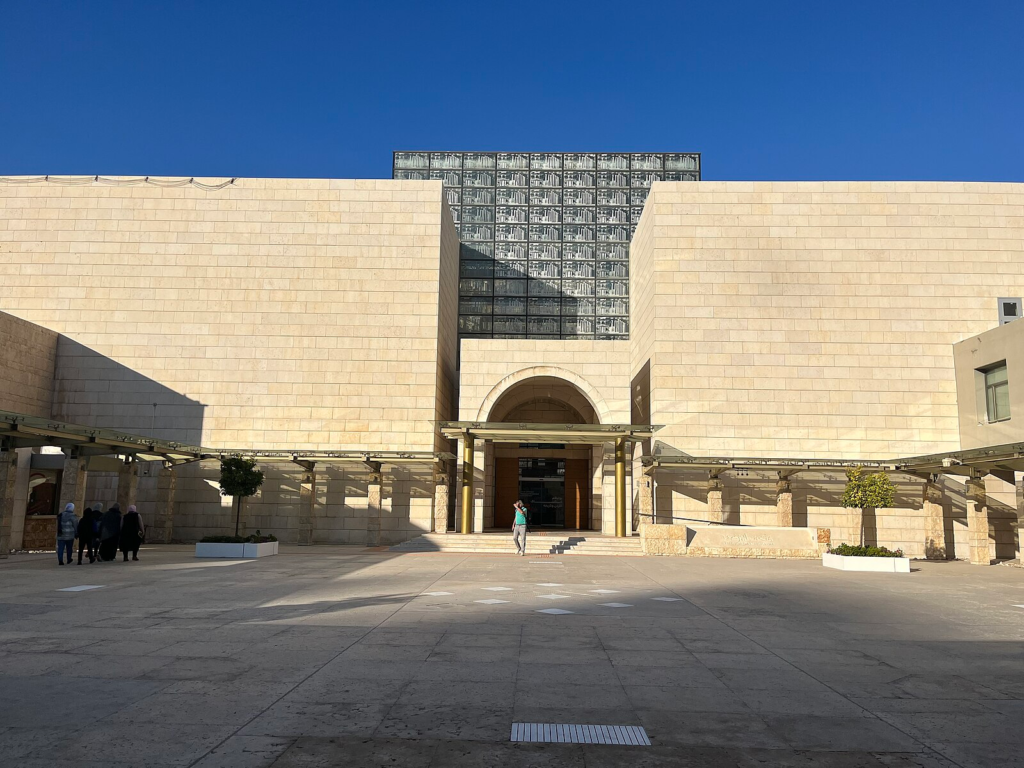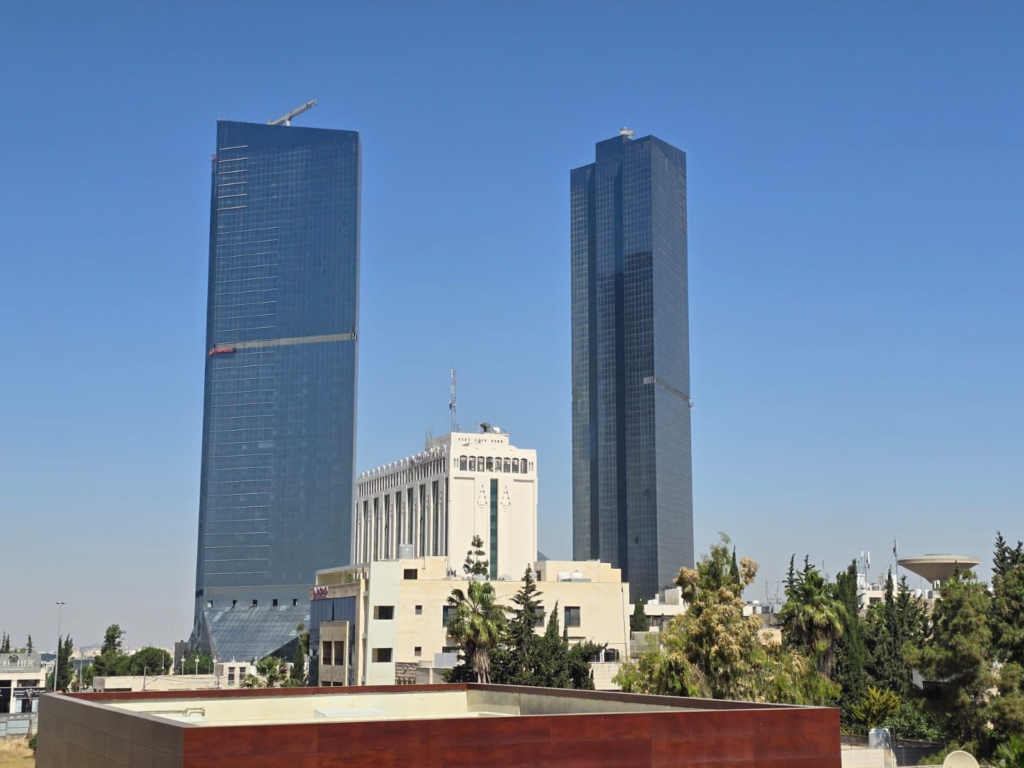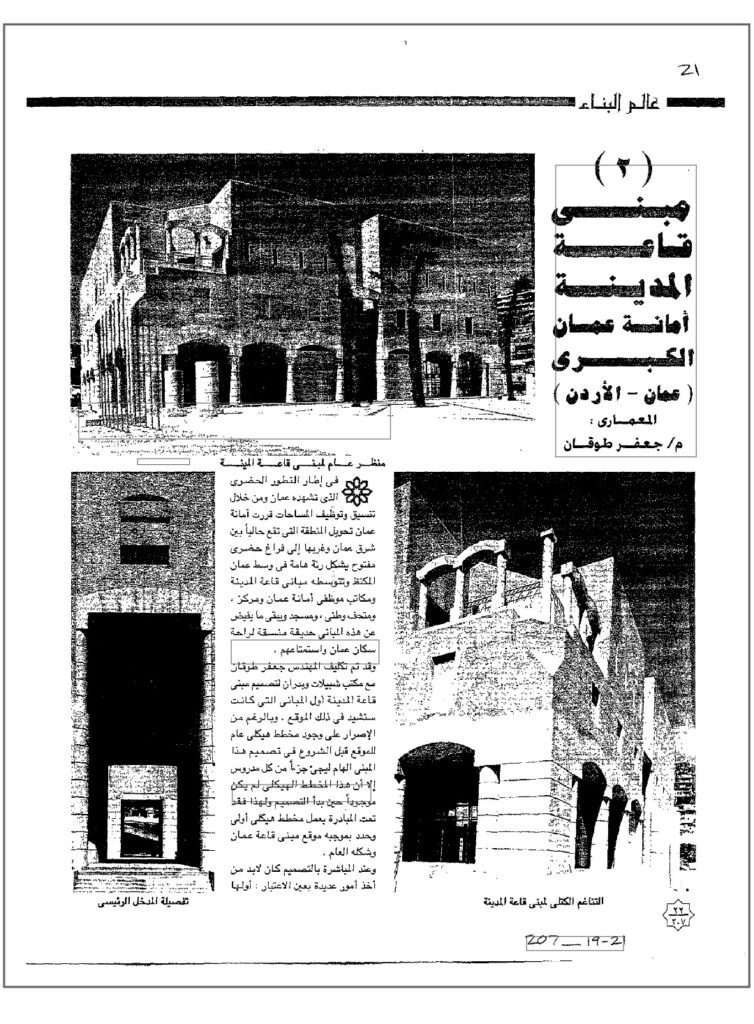Jaafar Tuqan: The Legacy of a Palestinian-Jordanian Architect

By: Ralph I. Hage / Arab America Contributing Writer
Jaafar Tuqan was born in 1938 in Jerusalem, which was then part of Mandatory Palestine. He was the son of the renowned Palestinian poet Ibrahim Tuqan, who wrote the poem “Mawtini,” now Iraq’s national anthem. Tuqan was also the nephew of Fadwa Tuqan, a prominent Palestinian poet, and Ahmad Toukan, the former Prime Minister of Jordan.
Tuqan graduated from the American University of Beirut in 1960 with a degree in Architecture. After completing his studies, he worked as an architectural designer at the Jordanian Ministry of Public Works before joining the Beirut-based firm Dar al-Handasah Consulting Engineers. In 1968, he started his private practice in Beirut, and in 1973, he co-founded Rais and Tukan Architects with George Rais, a Palestinian architect of Lebanese origins. The firm eventually became Jafar Tukan and Partners Architects and Engineers and relocated to Amman, Jordan, after the Lebanese Civil War in the mid-1970s. In 2003, it merged with Consolidated Consultants for Engineering and the Environment, a Jordanian company.
Tuqan was responsible for several significant architectural projects, including the Municipality of Amman in Ras al Ayn, which he designed alongside Rasem Badran. He also worked on numerous notable buildings, such as the Jordan Museum, the Mahmoud Darwish Museum, the Jordan Gate Towers, and the Municipality of Amman in Ras al Ayn. These projects showcased several architectural features he employed in his work.
The Merger of Contemporary and Traditional Styles
Tuqan was renowned for seamlessly blending modern architectural principles with inspiration drawn from the Levant’s traditional architecture.
Focus on Spaciousness and Natural Light
His designs often prioritized expansive, open layouts that maximized natural light and air circulation.
Incorporation of Local Materials
Tuqan commonly integrated locally sourced, natural materials into his projects, demonstrating a commitment to sustainability and regional construction practices.
Awareness of Context
His architectural approach was marked by respect for each project’s unique context, including the local history, building traditions, and inhabitants’ needs.
Notable Works
– Jordan Museum

Tuqan designed the Jordan Museum, which opened in 2013. It is a contemporary structure located in Amman that presents the history of Jordan from its earliest inhabitants to the present day. The exhibits include ancient sculptures and the Dead Sea Scrolls. A closer look at the design reveals the museum’s modern aesthetic, with its distinctive façade highlighted by golden columns and the use of innovative materials such as concrete, marble, metal, glass, and roof tiles.
– Mahmoud Darwish Museum in Ramallah

Tuqan created the design for the park and museum, which features a versatile hall, expansive spaces, water pools, an open-air amphitheater, and public gardens. The museum houses an electronic library with works by the late poet, along with several of Darwish’s personal items and photographs of him with family and prominent figures. At the entrance to the museum, a mural and a short biography of Darwish, presented in both Arabic and English, detail his life up until his death in August 2008.
– Jordan Gate Towers

The Jordan Gate Towers are a prominent high-rise development designed to symbolize the modernity of Amman. The complex includes luxury apartments, offices, and a hotel, blending contemporary construction methods with traditional Arab architectural styles. Originally conceived as a landmark project, the Jordan Gate Towers aim to transform the Sixth Circle area of Amman into a sophisticated, high-rise district.
– The Amman Municipality Building

Credit: IBrahim, A. M. (Ed.). (1999). Amman City Hall. Alam al-Bina Magazine, 22–24, 207. Cairo: Center for Planning and Architectural Studies.
Tuqan designed this project in collaboration with Rasem Badran. The building embodies contemporary design principles, integrating local materials and traditional architectural features. It incorporates modern elements like concrete, marble, metal, glass, and roof tiles, with local stone used as the main exterior cladding.
Awards
Architectural Engineer Award of the Arab Cities Organization: He won this award in 1993 and again in 2002.
Palestine Prize for Architecture: He also received the Palestine Prize for Architecture, demonstrating recognition within his home country.
In 1991, he received the prestigious Aga Khan Award for Architecture for his design of a Children’s Village in Aqaba, Jordan.
Legacy
Tuqan passed away on November 25, 2014, in Amman, Jordan. He enriched the heritages of both Jordan and Palestine, and his work continues to significantly influence the development of their architectural landscapes today.
Ralph Hage is a Lebanese American architect who divides his time between Lebanon and the United States.
Want more articles like this? Sign up for our e-newsletter!
Check out our blog here!








